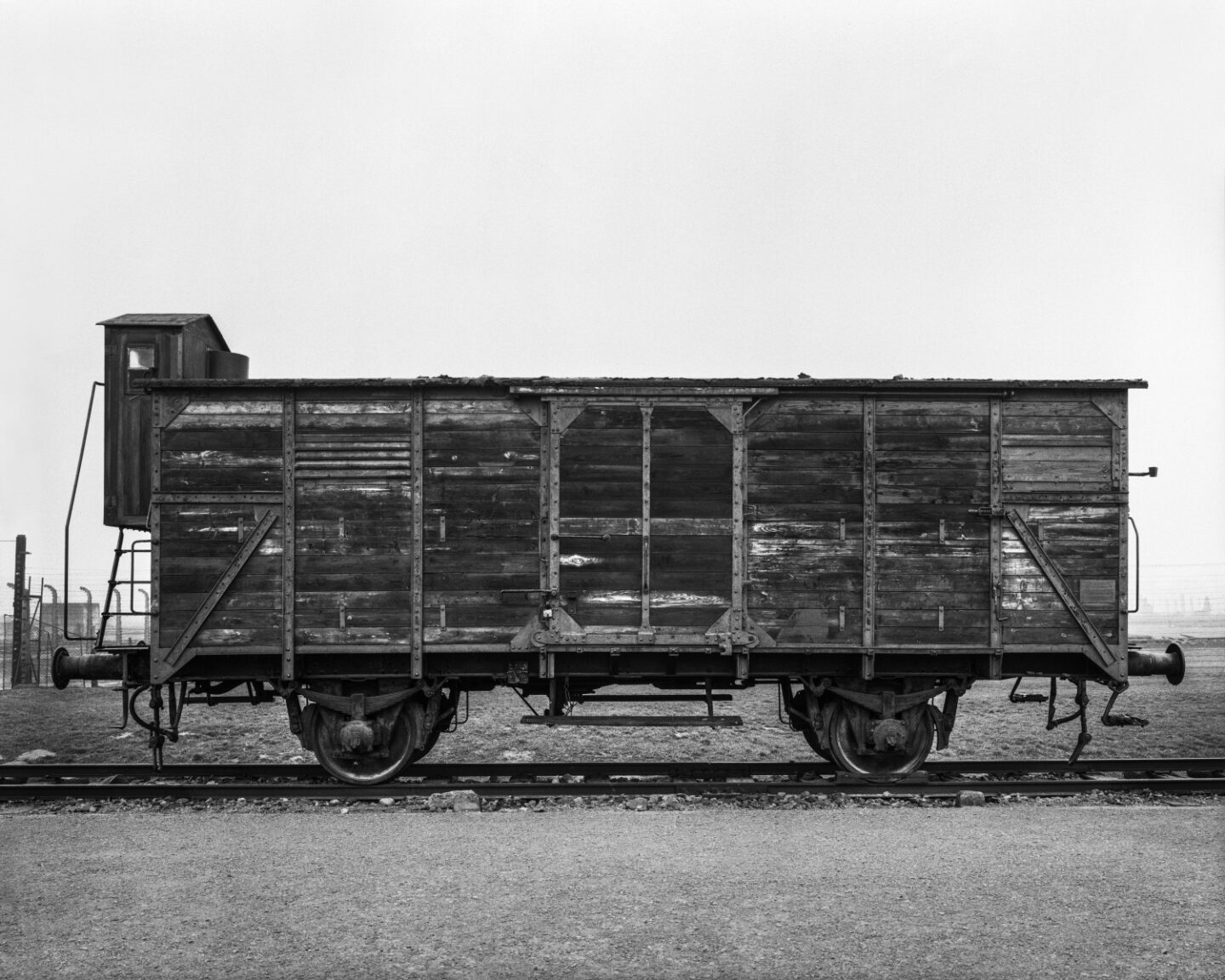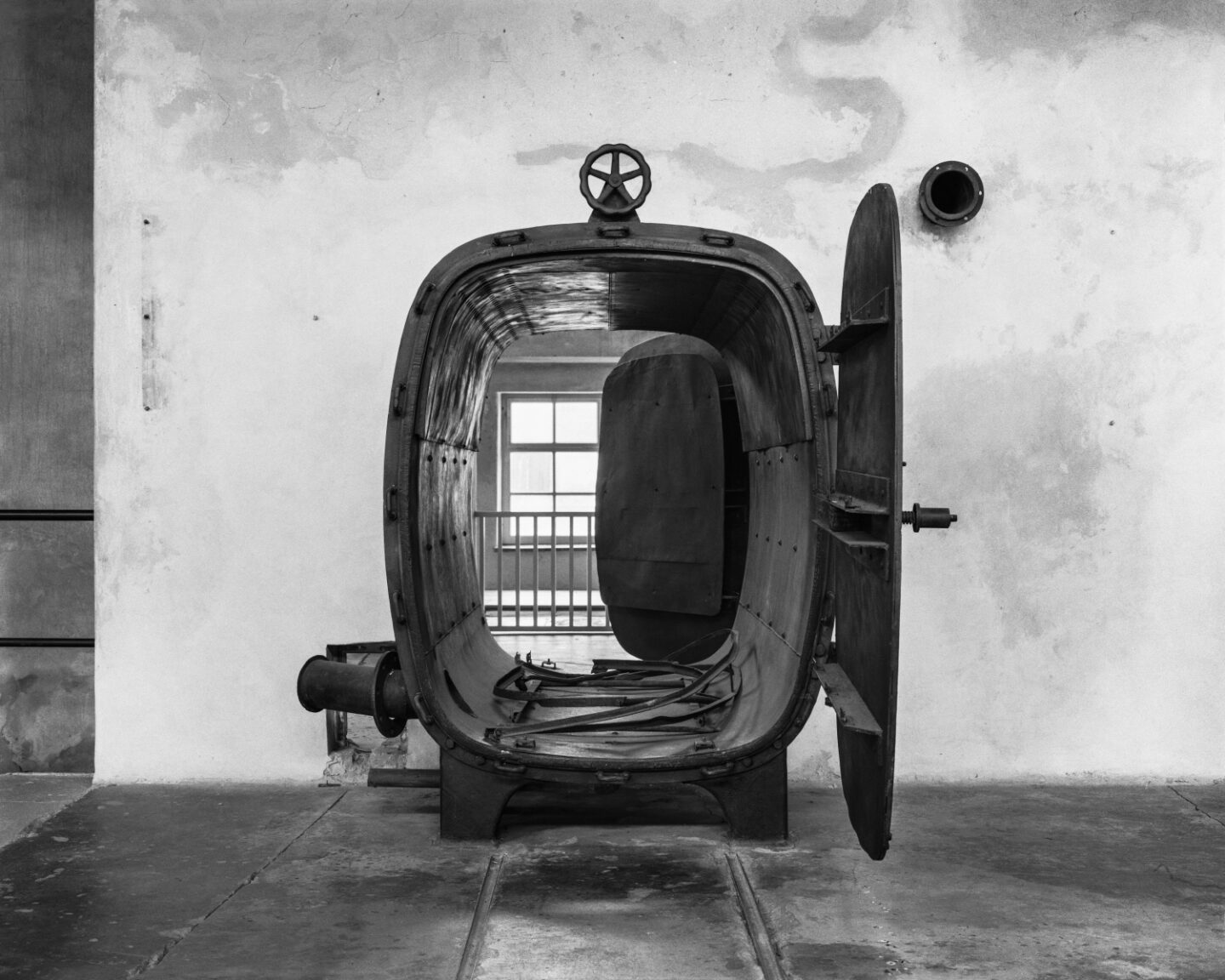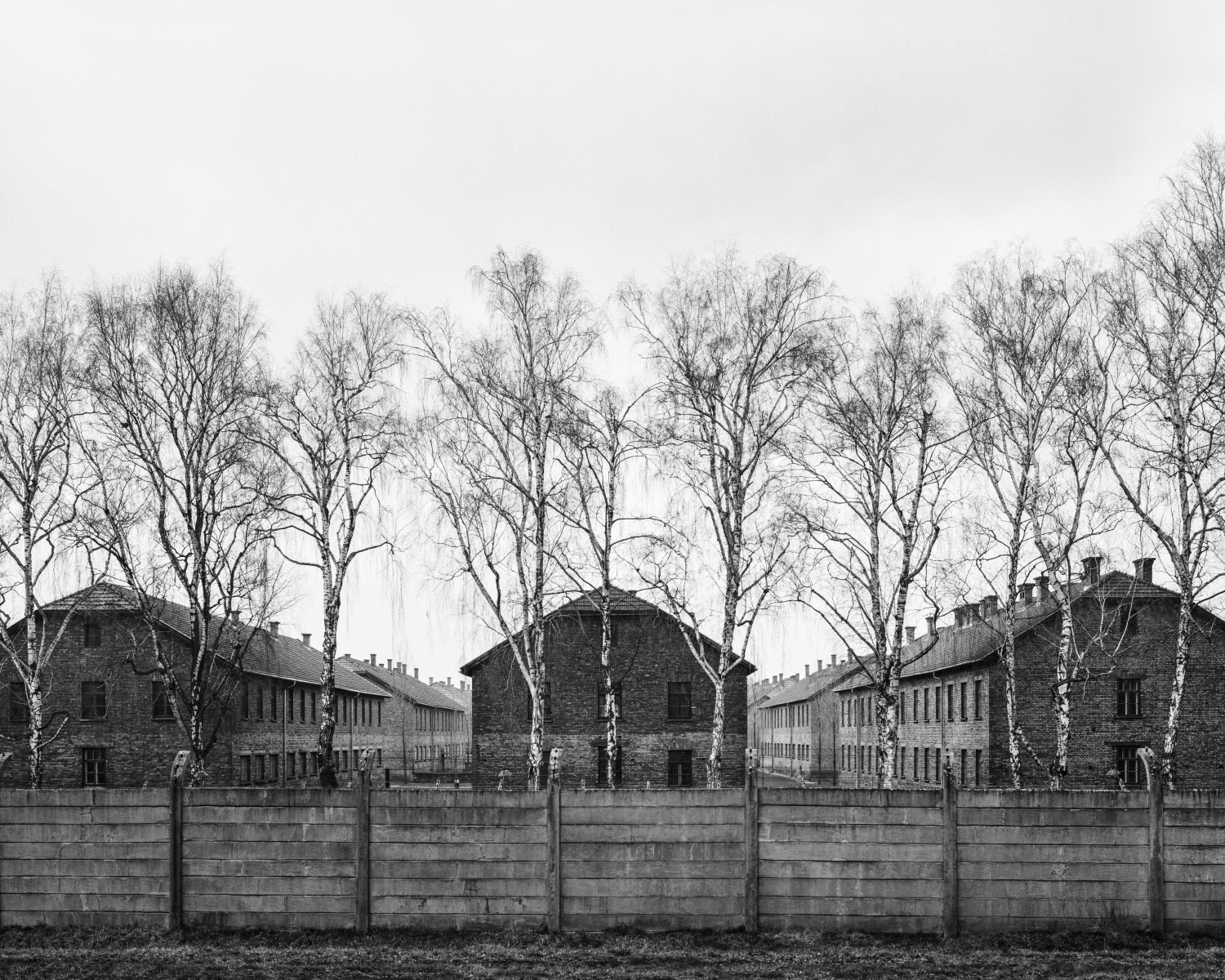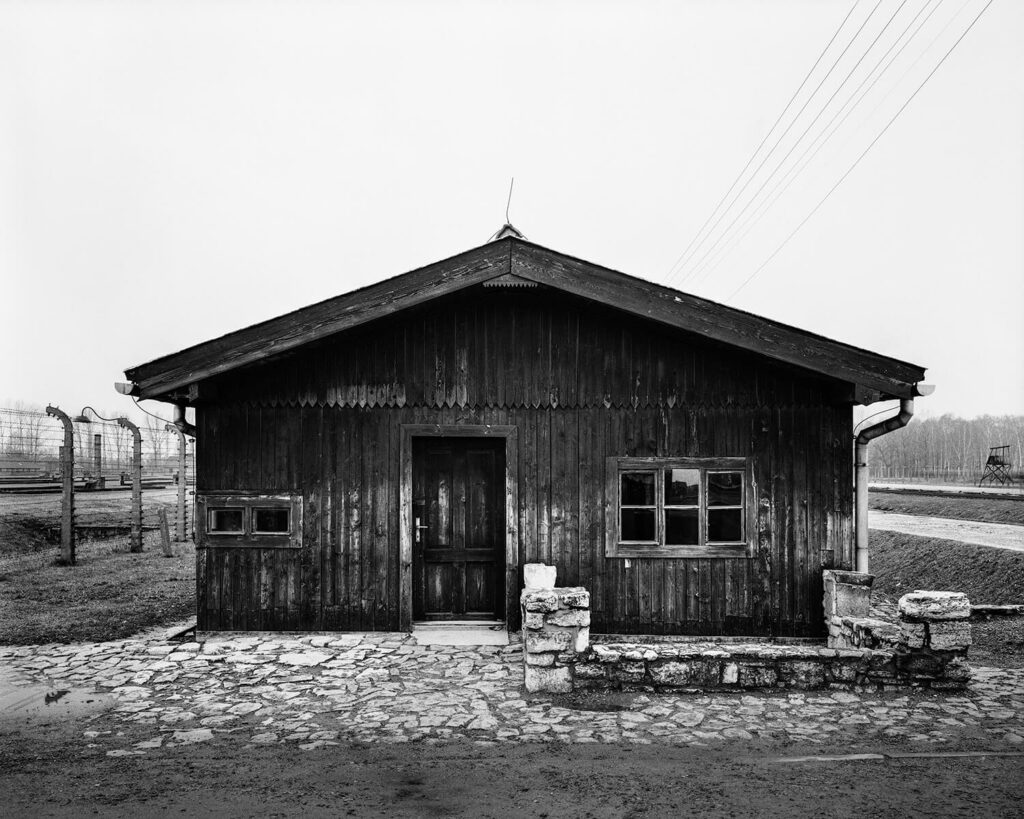Many historians have pointed to the seemingly paradoxical connection between the Holocaust and the processes of modernization in the West: Wolfgang Sofsky described the concentration camp as a place where „the destructive power of modern organization,” much like on the battlefield, was tested for efficiency. Zygmunt Bauman‘s thesis is comparable in that he argues that „modern civilisation […] was certainly not the only prerequisite for the Holocaust, but most likely a necessary one”.
November 7, 2025 – April 26, 2025
About the Exhibition
The design and architecture of Auschwitz-Birkenau concentration camp followed a single logic: the form of each building form was entirely subordinated to its function as an instrument of industrial mass murder. In this way, Auschwitz implemented the famous principle of „form follows function”. This formula was popularised by the US architect Louis Sullivan, one of the pioneers of modern architecture.
 Tomasz Lewandowski
Tomasz Lewandowski
At first glance, the photographs of the former Auschwitz concentration camp seem far removed from the Alpine world of the Obersalzberg. Yet the two places are closely connected: made by Hitler and his supporters paved the way for the mass killings in Auschwitz. The permanent exhibition Idyll and Atrocity provides a detailed account of the link between Obersalzberg and Auschwitz.
Tomasz Lewandowski (born 1978 in Nysa, Poland) lives and works in Germany. As a documentary photographer, he focuses
primarily on the sociological and political aspects of architecture,
urban planning, and design, which he examines in the context of political history.
 Tomasz Lewandowski
Tomasz Lewandowski
 Tomasz Lewandowski
Tomasz Lewandowski
